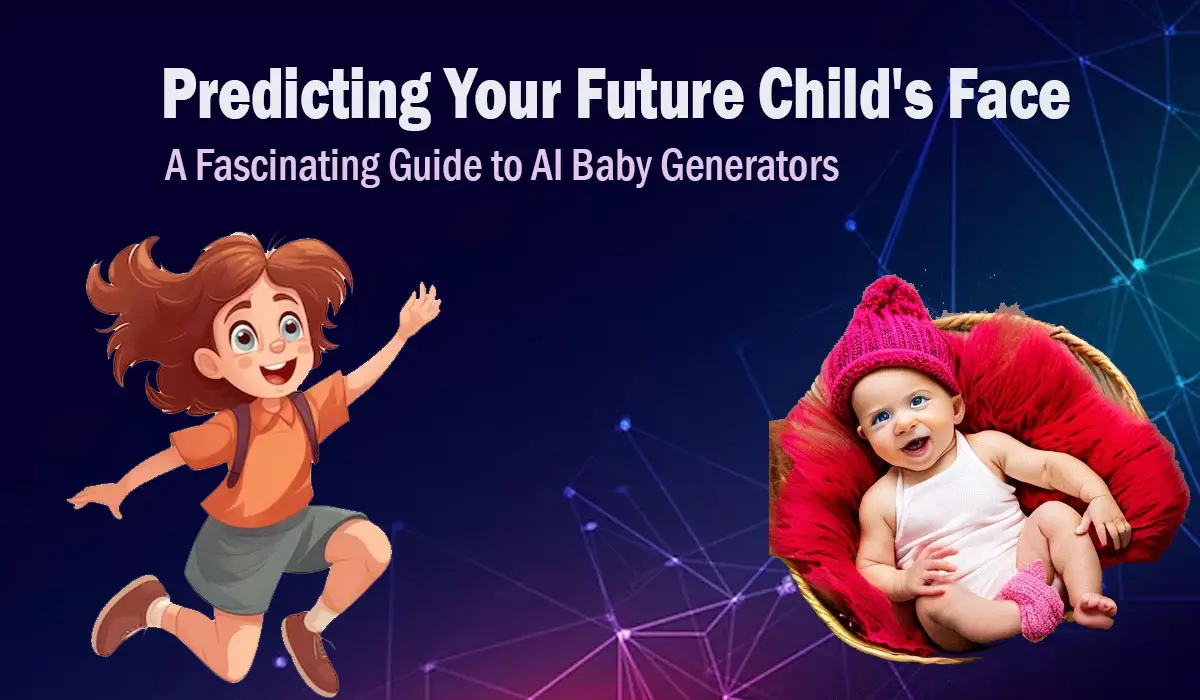How To Use AI Baby Generators: AI baby generators have become a popular trend, fascinating people with the ability to predict what a baby might look like based on the facial features of the parents. These generators utilize advanced artificial intelligence and deep learning algorithms, such as GAN (Generative Adversarial Network) and StyleGAN, to create realistic high-resolution images of babies with parental features. In this article, we will explore how these AI baby generators work, their accuracy, and some popular tools you can try.
Introduction
AI baby generators have taken the internet by storm, captivating curious minds with their ability to create images of future babies. These tools analyze two parental facial photographs and combine them with a randomly selected baby photo to produce a unique, virtual representation of a child. While these predictions are intended to be amusing and entertaining, they are not scientifically precise and should be taken with a sense of fun.
Read Also: Best Baby AI Generator
How AI Baby Generators Work
The process of AI baby generators involves using deep learning algorithms to analyze facial features from parental photographs and creating a synthesized baby face. The generators compare the input images to a vast dataset of training images, searching for similarities in facial structure, skin tone, and other attributes. By employing advanced AI techniques like GAN and StyleGAN, they generate realistic baby faces that possess recognizable features of the parents.
The Steps Involved:
- Facial Feature Extraction: AI baby generators begin by extracting facial features from photographs of the parents, including the shape of the eyes, nose, mouth, and other distinguishing traits.
- Data Comparison: These extracted features are then compared to a vast database of facial images to find similar matches and create connections.
- Random Selection: A random baby face from the dataset is chosen to combine with the parental features, making each prediction unique.
- Image Synthesis: The AI algorithm synthesizes the selected baby face with the parental features to create a virtual representation of the future child’s face.
Popular AI Baby Generators
Several AI-powered baby generators have gained popularity for their intriguing predictions. Here are some of the most widely used tools:
- Baby AC: This free service allows users to upload parental photos, and through AI predictions, it reveals what their future baby’s face might look like.
- Remini Baby AI Generator: This smartphone application harnesses advanced artificial intelligence to provide a glimpse of what your future kid’s face could be.
- BabyMaker: Another AI baby face generator, BabyMaker, enables users to upload photos of parents and generate images that offer a peek into their potential offspring’s appearance.
- Luxand Baby Face Generator: Utilizing facial recognition technology, Luxand Baby Face Generator creates future baby images based on parental photos.
The Popularity of AI Baby Generators on Social Media
AI baby generators have gained widespread popularity on various social media platforms, with TikTok being a significant hub for users to share their generated baby faces and their experiences with these tools. The entertaining and light-hearted nature of these predictions encourages users to participate and marvel at the possibilities AI can offer.
Accuracy and Limitations of AI Baby Generators
The accuracy of AI baby face generators varies among different tools, with some claiming up to 90% accuracy, surpassing industry benchmarks. However, it’s crucial to remember that these predictions are primarily intended for amusement rather than scientific precision. The quality of the parental photos used and the complexity of the deep learning models employed can impact the accuracy of the generated images.
While AI baby generators can provide exciting glimpses into what future children might look like based on their parents’ features, they should not be taken as definitive representations. Instead, they offer a fun and entertaining way to explore the potential genetic combinations and marvel at the wonders of artificial intelligence.
Conclusion
In conclusion, AI baby generators have sparked a delightful and imaginative trend on social media, allowing people to envision their future offspring. With the advanced algorithms and deep learning techniques they employ, these generators create realistic and captivating images of babies based on parental features. While the accuracy of predictions varies, the primary purpose of these tools is to provide entertainment and enjoyment rather than exact scientific precision.
The fascination surrounding AI baby generators is a testament to the incredible capabilities of artificial intelligence, which continues to astound and inspire us with its potential. As technology advances further, we can only expect more innovations and exciting applications in various aspects of our lives.
FAQs
Are AI baby generators scientifically accurate?
AI baby generators are primarily designed for fun and amusement and should not be considered scientifically accurate. While they use advanced AI algorithms, the predictions are speculative and not based on concrete genetic information.
Can AI baby generators predict a child’s appearance with complete certainty?
No, AI baby generators cannot predict a child’s appearance with certainty. The predictions are based on facial feature analysis, but genetic inheritance is complex and influenced by various factors beyond visual traits.
Can AI baby generators be used for medical purposes?
AI baby generators are not meant for medical use and should not be considered as tools for predicting actual physical characteristics of future children.
Do all AI baby generators produce similar results?
Different AI baby generators may produce varying results, as they use different datasets and algorithms. Each tool offers a unique perspective on potential future appearances.
Are AI baby generators safe to use?
Yes, AI baby generators are safe to use for entertainment purposes. However, it’s essential to be cautious about sharing personal photos online and to ensure you are using reputable and trustworthy applications.

